IS GUIDED CHAOS TAI CHI?
...AND WHICH TRAINS YOU TO TRIUMPH
OVER THE CHAOS OF REAL VIOLENCE?
IS GUIDED CHAOS TAI CHI?
...AND WHICH TRAINS YOU TO TRIUMPH
OVER THE CHAOS OF REAL VIOLENCE?
IS GUIDED CHAOS
TAI CHI?
...AND WHICH TRAINS YOU
TO TRIUMPH OVER
THE CHAOS OF
REAL VIOLENCE?

The American art of Guided Chaos is NOT tai chi.
But it applies internal principles for combat in a free-form, dynamic way that many high-level tai chi instructors have said is closer to a true "combat" tai chi than any other tai chi "fight" training available.
"There are some people who can flat out kick your ass. I met a couple of them this weekend."
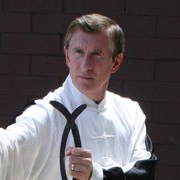
Sifu Ken Gullette
Internal Fighting Arts, LLC
Certified instructor with the U.S. Chen Family Chen Jiajou Taiji Quan Federation, connected directly to the Chen Village tai chi school through Grandmaster Chen Xiaoxing
"...Guided Chaos should be required training for anyone interested in push hands and the self-defense aspects of the internal arts...It is a fighting art.
Through Contact Flow, I was recognizing skills that all internal artists -- especially those who practice push hands and close-up fighting skills -- should develop, but many of them don't.
And yet, he [John Perkins] has captured the essence of something that has eluded many internal artists. It should be required training for anyone in the internal arts. Hell, it should be part of any martial artist's training.
There is truth to discover in Guided Chaos, and it fits perfectly into whatever internal or external martial art you are studying."
"John Perkins is the only master I have found...that actually teaches you...combative attributes."
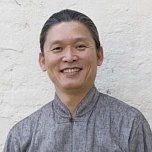
Sifu John C. Chen
Ba'z Tai Chi & Kung Fun
4th Degree Black Belt Wu-Tan system, Tai Chi Chuan, Bagua, Praying Mantis instructor. Expert in the Royal Bodyguard System from Taiwan – Baji Chuan.
"Having trained in a number of systems over the years...John Perkins is the only master I have found that has created a proven methodology that actually teaches you how to develop for yourself the combative attributes mentioned in the various internal martial arts."
"To me, Guided Chaos is better for real fighting than Tai Chi."
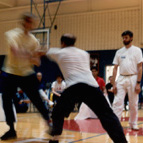
David Pancarisian
U.S. National Push Hands Champion
1989 Grand Champion Push Hands
1st place Push Hands (heavyweight)
1990 1st place Push Hands (heavyweight)
1991 1st place Push Hands (middleweight)
WASHINGTON, DC
1990 1st place Push Hands (heavyweight)
TORONTO, CANADA
1992 1st place Push Hands Fixed Step (light heavyweight)
TAMPA, FL
1992 1st place Push Hands Fixed Step (heavyweight)
Studied in New York City with Master William C. C. Chen since 1978 and B. P. since 1982. Received instruction from Master Jou Tsung Hwa, Dr. Tao Ping-siang in Taiwan and in New York; Master T. T. Liang in Boston; Master Benjamin Lo in San Fransisco; Master Huang Hsing-hsien in Malaysia and Master Peter Ralston in various workshops. Received certification from Master William C. C. Chen in February, 1990. Master Pancarisian became a private student of John Perkins, for whom he built multiple, revolutionary Guided Chaos training devices including "The Hellevator" and the 360 Degree Crash Rack.
"The more I train your methods and watch the videos,
I see the genius of your approach."
"John Perkins has mastered the real world application of Combat Tai Chi"

Dr. Drew Miller
Coordinator of Degerberg Martial Arts Academy
Former senior student of Tai Chi Master Wayson Liao
"Most people doing Tai Chi never get to the level of proficiency Guided Chaos delivers."

Michael Coplon
Tai Chi Instructor
"I am a long time student and teacher of Tai Chi Chuan. The Guided Chaos training I have had this week has been extremely beneficial. You and your instructors have taught me more about internal martial arts, in a few days, than I could have possibly imagined.
"Although both Tai Chi and Guided Chaos offer challenging training, most people doing Tai Chi never get to the level of proficiency Guided Chaos delivers because they become caught up with external form. By concentrating on essential movement principles rather than superficial choreography, GC methods provide the best way to gain competence, expertise and even mastery of both self defense and internal martial arts. Grand Master Perkins is absolutely correct when he says that in GC, form follows function--and not vice versa. I will still have to put in the practice time, to get the most from your help, but what I need to work on is now clear to me. Thank you John...for setting me on the fast track."
You do the best job of anyone I have seen putting this stuff together in a usable package."
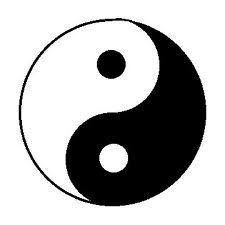
Bill Goble
Tai Chi Practitioner
"I have been a baguazhang and tai chi practitioner for about 16 years and I have studied high stress combatives based on the WWII combato and defendo system. You do the best job of anyone I have seen putting this stuff together in a usable package."
"I will be 68 in 6 days and started Martial Arts training when I was 18, Tai Chi when I was 33. Bagua, Hsing I and Aikido are also in the mix. You guys without a doubt have the most common sense approach to self defense and the internal aspect of the arts. All the bullshit has been eliminated."
► name withheld by request
Having doubts about your current training?
►The Tai Chi Problem:
According to Wang Chiao Yu, there were two branches of T'ai Chi boxing. One was called Kuang P'ing and the other Pei Ching. For political purposes, the Pei Ching school only taught the soft aspects of the art, essentially neutering it for combat. This training endured and spread. But that was nothing compared to what happened many, many years later.
During the Communist Revolution, all the top combat tai chi fighters and masters were seen as threats to the government and were either harassed, jailed, expelled or killed. The lucky ones emigrated or went into hiding. Combat tai chi for self defense essentially disappeared.
In the modern era, with the softening of the Chinese government, tai chi was re-purposed as a form of gentle exercise for the masses. The end result is that it is now nearly impossible to find teachers who can actually use combat tai chi for real street self defense. Not school sparring or sportive push hands competition but real, violent, blood bath-type self defense. Often a student will be instructed in forms for decades yet be made to wear boxing gloves for "sparring" purposes. (Many of you out there know who we're talking about). What happened to all the internal principles? Where is the live, free-form training and what happened to the varied open hand strikes and why can't they be trained without the deadening, sportive effect of boxing gloves?
"In the Art of War there are no fixed rules."
►Li Chuan, Sun Tzu, "The art of War"
Feel Like Something's Missing?
...or you've been in a serious fight and couldn't escape and somehow, in the face of real violence, everything became chaos. You couldn't get your balance, your brain was reeling, you couldn't find your range and all the push hands practice or techniques that were so easy to execute in class... you just couldn't get them off. Maybe you were seriously hurt. And then it hits you:
Have you suddenly realized these 4 things? (Like after maybe 20 years of dedicated push hands practice?)
1) That you're no closer to finding the true meaning and martial application of tai chi principles such as silk reeling, leading, following, borrowing, folding, receiving, turning, collecting, empty-solid, yin-yang, peng ching, etc. then when you started.
2) That you’re no closer to understanding or performing mystical feats of “Chi” then when you started.
3) That endless microscopic examination of proper form is preventing you from seeing the bigger picture: that practicing patterned techniques and forms doesn't make you formless, spontaneous or adaptive to the chaos of REAL violence. In fact, it cripples your ability to apply internal principles to true fighting.
4) As far as you can tell--Combat Tai Chi for self defense no longer exists.
THE TROUBLE WITH PUSH HANDS: Too much pushing.
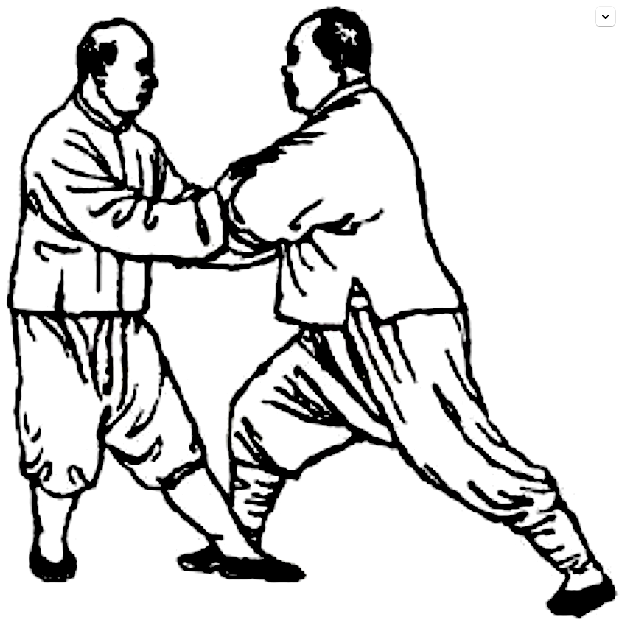
Push hands is a wonderful tai chi exercise that promotes balance, coordination and health. Unfortunately, as it is typically practiced (your school may be different...but it's rare*), it has almost no benefit in training to fight for your life.
As it is often done, how is it beneficial to practice slow push hands and then suddenly accelerate to full speed when you fa jin? Granted, push hands is not fighting, it's an exercise. But if you and the enemy are already fighting at full adrenaline velocity, and you can suddenly accelerate to 2, 3 or 4 times full speed, you'd be Superman and you wouldn't need any of this stuff! How does this develop your nervous system responses for the chaos of real violence? So why train this way?
If you're going to spend time training self-defense, shouldn't it have some specific relevance to real combat?
TOP 4 PROBLEMS:
1. Too much pushing. Any fight that involves pushing is one you should have avoided in the first place because it's not serious. Run. If you can't run, and you feel like you could die, then fight like your life depends on it. That means crippling, penetrating strikes to lethal targets. What does this have to do with slow push hands training? Well...nothing.
Even high speed, full force pushing and throwing at the push hands competitive level...is still pushing. Do you have the skill to push someone twice your size hard enough to disable them? Maybe--if you're a grand champion. But even a 100 pound woman can stop a monster with a chop to the throat or stab to the eye. The trick--is HOW to get it past his defenses...AND elude his attack.
All that pushing training, even initially, blinds and cripples your innate response to real violence the way it really happens. "But I could easily translate my pushing skills into crippling combat strikes if the need arose." Dream on. Forget about pushing or being pushed. Learn to feel, find, create and hit through an opening--and avoid the same to you.
SOLUTION: Instead of pushing, substitute every variation of striking from any angle to any angle with balance and body unity, but still maintain contact. You will still be working balance and rooting but from the combatively REAL dynamic perspective of "Kill or Be Killed." Yield in the smallest possible space to create an opening you can snake through simultaneously and then hit...like a sewing machine. And what about kicking? Why not use your feet with the same offensive/defensive sensitivity as your hands?
What do we call this? Guided Chaos Contact Flow/Combat Flow. How do you hit at close range without getting hit, getting tight, grappling or breaking contact? Find out...
2. Inconsistent speed. To repeat what was explained above, Tai Chi practitioners will move slowly, feeling each other out, seeking the other's root, and then "faj" or explode rapidly to launch them backwards. This promotes utterly unrealistic reflexes. Two people fighting are essentially moving at one speed--super fast!--and one or the other may be going just slightly slower or quicker.
Moving very slowly and then very quickly in partner practice not only destroys both your defensive and offensive responses--it creates in your mind a false expectation of violence. If 2 people are moving at maximum speed, can one of them suddenly go twice that? No, not unless they're Superman. Then why train that way?
SOLUTION: flow at one speed. If moving slowly, learn to create and seal openings at that speed, NON-COOPERATIVELY, without cheating. This promotes sensitivity and adaptivity, especially when training at consistent slow speeds.
3. Cooperative training. To expand on the above, any kind of patterned, cooperative partner training is worse than useless; it essentially sabotages your nervous system against future attacks. You CAN cooperate on speed and force levels because then you're both in relatively the same universe and more or less equally handicapped so you can focus on unconscious responses. If you're overwhelmed in practice you can't learn to sense and create...and wind up flailing and freezing...and getting injured. Speed and force can be added in later.
SOLUTION: You need to become familiar with interpreting and responding to unpatterned motion--chaos--right from the beginning, and we're going to guide you through it. If not understood, specific attributes such as Looseness, Body Unity, Balance and Sensitivity can be isolated out and developed through specific drills but they should never be mixed in with 2 person practice choreographed or cooperatively or else they become a recipe for disaster. Contact Flow incorporates all of these within the context of fighting to save your life--even if you're BOTH moving at only 1 mile per hour.
4. False beginnings. How do you start push hands? By touching hands? By stepping in with a big push? By tentatively "reeling silk" until you have joined with your partner's root? This is fine for push hands but disastrous for training your responses to fight to save your life. If you can't run from impending violence you want to do what Professor Bradley Steiner (President, International Combat Martial Arts Association) recommends: "Attack the Attacker!" However, you do not want to just charge in like a Rhino (unless maybe you are a Rhino--in which case who would attack you?). You want to do what GM Perkins advises: "Throw a monkey wrench into their attack." This entails moving in but offline simultaneously. This takes practice, and beginning your two-person practice like a waltz is another recipe for future disasters.
*John Perkins can personally vouch for the tremendous tai chi ability of Chicago master Wayson Liao
When fighting to save your life, don't think outside the box.
GET RID OF THE BOX.

How Is Guided Chaos Different?
Guided Chaos is different from other organized "styles" of martial arts in many ways.
How different is it? First, and foremost, it has no forms.
That is, it has no set and sanctified techniques, no prearranged specific responses to given specific attacks, no learn-by-the-numbers choreography to clog the mind and the reflexes with unnecessary strategic calculations. How is this possible? It does it by inverting the entire learning process. You start where most training ends. Why? Because during a real fight for your life, it is virtually impossible to deliver a stylized technique effectively; the speed, chaos, viciousness, confusion, and utter terror associated with a real fight prevents this. Your nervous system simply becomes overloaded with the flood of sensory stimuli. You can't treat your brain like an electronic dictionary of self-defense responses and expect it to select the right "technique" to counter a "matching" attack under extreme duress. It simply doesn't work that way. If you've been programmed by training a specific response to a specific attack, your defense will fail if the attack changes by even one inch from the way you've trained.
This is true whether you know one technique or one thousand. How will your body know when to deliver the strike if the sensory data it is being bombarded with has no correlation to your practice? Since all serious (non-sparring) fights are literally hell-storms of chaos, you cannot rely confidently on choreographed training. This is not conjecture. It has been proven through exhaustive experience, countless police and morgue reports, and testimonials by police officers with high-ranking belts from various styles who's classical training failed them when confronted by real violence.

The Biggest Difference: Get It from the Horse's Mouth
Internal Power. We all want it. But what is it?
Power developed through looseness, sensitivity, adaptive rooting, perfect alignment, nervous system relaxation/excitation and concordance with (as opposed to against) gravity (what we in GC call "Dropping Energy.") Not hocus pocus or gross muscular contraction (which is External Power -- the kind used in karate and most martial arts) that only young men and supreme athletes can use with any kind of success in the streets. That's all of us, right?
Obstacles to gaining Internal Power include focusing on arcane or untranslatable terminology, confusing drills and stylish uniforms that have no correlation to real violence or physics. The Tai Chi school that teaches the real deal for combat is exceedingly rare (see "The Tai Chi Problem" above for political/historical reasons why this is so).
And then you have to ask yourself:
"Did my instructor actually use this stuff in real combat?" i.e., not just in tournaments."
Now you may get lucky and be able to have someone of some "skill" interpret it all for you, but:
In other words, something got lost passing it down through the generations--possibly even in the first generation.
Here's the cool thing about John Perkins: he created Guided Chaos on his own by being forced to fight from the age of 5 by his father and uncles and later by work as an emergency response cop during a very bad period in the urban jungle of Yonkers NY, involved in over 100 brutally violent arrests where people routinely went to the hospital or morgue. In other words, he didn't spend his career handing out traffic tickets. He was also an unlicensed pit fighter (real "no rules") on the docks of Newark and New Orleans.
On his own, forced to adapt, Perkins discovered so called Adaptive Combat Principles that only later were corroborated by tai chi masters to be similar (and by some experts) superior to what they were teaching. So when you learn Guided Chaos, you're getting it straight from the horse's mouth with concrete physics, not some 20th generation interpretation or re-imagining. Which is why his students can do it (and teach it) also.

If Guided Chaos Has No Techniques, How Do You Train?
You train dynamic principles of movement only. The main ones are Body Unity, Looseness, Balance, and Sensitivity. There are many others, but they all focus on developing your subconscious neural pathways, resulting in what some would call "natural motion" and others would call "chi." These are developed through unusual drills and exercises and combined with the simple deadly strikes of Close Quarters Combat developed by Fairbairn, Sykes and Colonel Rex Applegate and proven in World War II.
While no previous training is necessary for learning Guided Chaos, John Perkins has a reputation for teaching Black Belts how to fight better.
ⓒ All Rights Reserved - Adaptive Defense Inc..